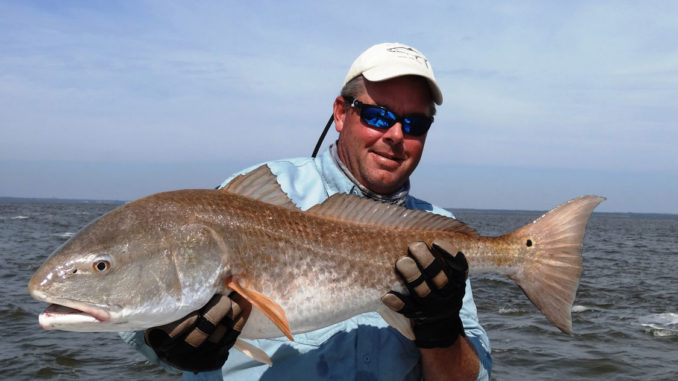
From Charleston to Georgetown, you can go for bull reds or numbers of smaller fish this month; it’s your choice, and there’s no bad option.
Successful fishing is all about choices. Redfish angler have two choices this month, and both are winners.
There’s the popular pattern for fishing for lots of redfish back in the flats, but the allure of hooking really big bull reds at the ocean’s edge is also strong. From Charleston to Georgetown, the opportunities abound for both big reds or bundles of them.
Capt. Steve Roff of Barrier Island Guide Service said there’s no wrong choice, because great fishing exists for quality and quantity. In March, his clients make the decision to go for trophy fish 40 inches or larger, or to fish for numbers of good-sized redfish.
“There’s no bad choice during March, but based on how I fish, the really big fish and the large numbers of fish are found in two totally different areas,” Roff said. “That’s one of the things I love about redfishing in March: The opportunities for outstanding fishing are in place for both.”
Roff said that when thinking big reds, he’s thinking the ocean and not the shallow flats.
“We may be fishing in fairly shallow water at times, but typically, I’ll go to the beach and find the sandbars, often the last sandbar before the water gets into the open ocean,” Roff said. “Some of my favorite places are sandbars that may even have small portions of the bar exposed at low tide. In this case, I’ll sometimes beach the boat and get out and fish the edges that drop into the natural runs of deeper water or into the deeper cuts around these shallow sandbars.
“When we leave the boat we’ll use sand spikes for rod holders,” Roff said. “Sometimes these spots are tiny, but the water around the edges will hold lots of huge redfish. Sometimes we’ll be fishing from the boat depending on the place and the level of the tide.
“The key is to get out to the ocean if you’re targeting a really big redfish. When I say big red, I’m talking about catching fish in the 40-inch and larger class, and on an average day, we’ll often catch six and sometimes a lot more of that size redfish.”
According to Roff (843-446-7337), one of the real attractions for big reds in the surf is that the blue crabs, one of their delicacies, are beginning to spawn in March and April.
“This is a really big deal for redfish, because blue crabs full of eggs are a favorite food, and with the eggs, they provide tremendous energy for the redfish,” Roff said. “In addition, there will be some mullet out near the ocean — not as many as are found in warm weather, but there will be enough that they will offer forage opportunities.
“My bait choices are easy to figure: I’ll be using blue crabs, usually quartered, and cut mullet as my preferred baits for the really big redfish.”
Roff said areas where this type of big-fish situation occur are all along the coast from Georgetown to Charleston. Sometimes the water will be a bit dingy with the tides moving in and out, but that won’t have a negative impact on the fishing.
“There are some exceptionally good areas throughout, with the Bulls Bay and Cape Romain areas being excellent and full of big redfish,” Roff said. “Generally there’s not a lot of competition out there, because most of the fishermen are back in the flats chasing the numbers of fish. But for the big fish, you can get away from the crowds in the area north of Charleston toward Georgetown. For many, it’s a long trip to get to some of these places but the reality is, the exceptional opportunity in March makes it very worthwhile.”
Roff said that fishing for big redfish is also excellent around jetties.
“This is another outstanding place and sets up perfect for big redfish during March,” Roff said. “Again, crabs will be an attractant, as (they) will be coming out of the channels to the jetties, and the big reds will be waiting on them.
“The key I’ve found is to fish right where the sand and rocks of the jetties meet. I don’t do as well fishing on the rocks or out from the rocks,” he said. “That defined line where the rocks and sand meet is the ideal place to target big redfish. That’s where they’ll be looking for crabs.
“Also, while the big schools of mullet are not here in March, there will be enough mullet in these areas to attract big redfish, so I use both crab and mullet for bait. From Charleston to Georgetown, there will be excellent fishing for big reds around the jetties.
The other option is to focus on numbers of fish, and guide Clayton Crawford (843-277-4477) said he spends a lot of time doing just that.
“March is still an awesome month to be back in the flats looking for redfish,” said Crawford, who is headquartered in Charleston. “Some fishermen think the big schools of redfish have left the shallow flats, but that’s certainly not the case.
“One of the great things about this area and time of year is that there are so many great places for these fish to be,” Crawford said. “The key is, of course, finding the right place, but it’s simply a function of getting out and looking in the backs of the creeks, and flats and literally look for the fish.
“Throughout out the winter, the redfish are in the flats on low tide, and that remains true during March. However, the pattern will begin to change in April and May as the water warms and more and different forage enters the process of following the redfish to their forage.
“While some fishermen chase these fish all winter, there is less pressure, and some of the areas have not been fished hard,” he said. “I may get far back in some of the flats near Charleston and down toward Cape Romain and even Bulls Bay, but there are literally untold numbers of places these fish can be found.”
Crawford said low tide is usually the best for fishing the shallow flats, but there’s still plenty of opportunities to catch redfish on the high tide as well.
“It is not unusual to see 50 or more fish in a single school at this time of year, although by March, sometimes the schools are smaller, but they can be more aggressive,” he said. “When you see the wake made by a huge school of redfish in mere inches of water as they push through the flat, its super exciting.
Crawford, who has worked as a guide on Lake Moultrie, said that seeing that many fish, with the V wake pushing along in his direction, is akin to being in the midst of a wild striper jump. Maybe better, he said.
“When you cast the lure in front of them and begin the retrieve, one or several may streak toward it,” he said. “It’s hard to not literally snatch the rig out of the water before the red actually gets it. When they do, you’ll be hooked into several pounds of hard-fighting redfish, often in only inches of water. It requires a maximum amount of concentration to keep the fish from pulling the line over an oyster bed, but fishing near these oyster beds at low water is a prime place to find big schools or redfish.”
Crawford said this time of the year, there are many options on how you can catch redfish.
“An ideal day is one with little or no wind and I can spot the fish moving along the flats,” Crawford said. “This way I can see the fish, predict the route they’re traveling and get the boat positioned to intercept them. Good tactics include casting lures such as spoons, Gulp!, live bait or even small flies on the fly rod.
“A redfish on a fly rod makes for an adventure anyone will enjoy and long remember. I’ve found that white or chartreuse Clousers are excellent for March redfish.”
“I also use live bait such as mud minnows, and I’ll even have some fresh shrimp or frozen chunks of shrimp left over from the shrimping season for bait,” he said. “These are great for windy days when it’s more difficult to see the redfish moving in the flats. The scent of shrimp is almost irresistible to redfish, and live bait or shrimp are great assets on those frequent windy days in March.”
“My preference is to fish the low tide and the last of the falling tide is,” he said, “but my favorite time is when the water begins to rise, but before it gets high enough for the fish to get back into the grass. That’s when you can really see them working on the shallow flats and catch them,”
Crawford said when using bait instead of artificial lures, he will typically fish some bait right on the bottom but will also use a float rig.
“When fishing around grass beds, points, pockets and shell beds in the flats, a float rig keeps the bait just off the bottom and allows me to fish it along various types of cover as well as grass lines. I want to give redfish as many options as possible to bite.”
Crawford said that understanding redfish, especially this time of the year, is a key to fishing success.
“Redfish can be caught on any tide during March,” he said. “The tides simply dictate what the fish will be doing based on the options they have. When the tide is low, the fish will be out of the grass and working along the shallow flats.
“It really doesn’t matter much for redfish whether the low tide is at dawn or if it’s at noon,” Crawford said. “When the water is high, the fish relate to the grass, and they’re more difficult to find, but you may find them bunched up and enjoy some fast action. The last part of the dropping tide and the first couple of hours of the rising tide, you can find plenty of areas where the water is out of the grass and the fish will be roaming the flats.”
DESTINATION INFORMATION
HOW TO GET THERE: Charleston is easy to access from I-26 or US 17, with either route putting you in the neighborhood of the Ashley, Cooper and Wando rivers, all prime redfish spots, as well as Charleston Harbor and areas north along the ICW all the way to Bulls Bay and Winyah Bay. The Remley Point public ramp in Mount Pleasant is a good starting point for Charleston-area fishing; the Buck Hall Landing in the Francis Marion National Forest near Awendaw provides great access to Bulls Bay and Cape Romain.
WHEN TO GO: Redfish action is great throughout the winter, but March is a prime month with great opportunities for really big redfish as well as big numbers of redfish.
BEST TECHNIQUES: For numbers of redfish on the flats, cast artificial lures such as gold spoons or Gulp! Ghost Shrimp in chartreuse. Live bait, or even frozen bait caught earlier, is outstanding and includes shrimp, finger mullet and mud minnows. For the huge redfish, use quartered crab or cut mullet near the main ocean surf.
FISHING INFO/GUIDES: Clayton Crawford, Crawford’s Guide Service (843-277-4477); Capt. Steve Roff, Barrier Island Guide Service, 843-446-7337 or www.barrierislandguide.com. See also Guides & Charters in Classifieds.
ACCOMMODATIONS: Charleston Area Convention and Visitors Bureau, www.charlestoncvb.com or 843-853-8000; S.C. Association of Visitors Bureaus, www.discoversouthcarolina.com or 803-734-1700.
MAPS: Maps Unique, 910-458-9923 or www.mapsunique.com; Capt. Seagull’s Nautical Charts, 888-473-4855, or www.captainseagullcharts.com; Sealake Fishing Guides, 800-411-0185, www.thegoodspots.com.

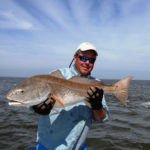
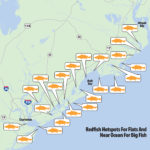
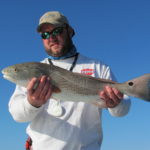
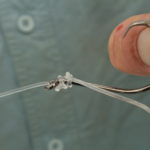




Be the first to comment